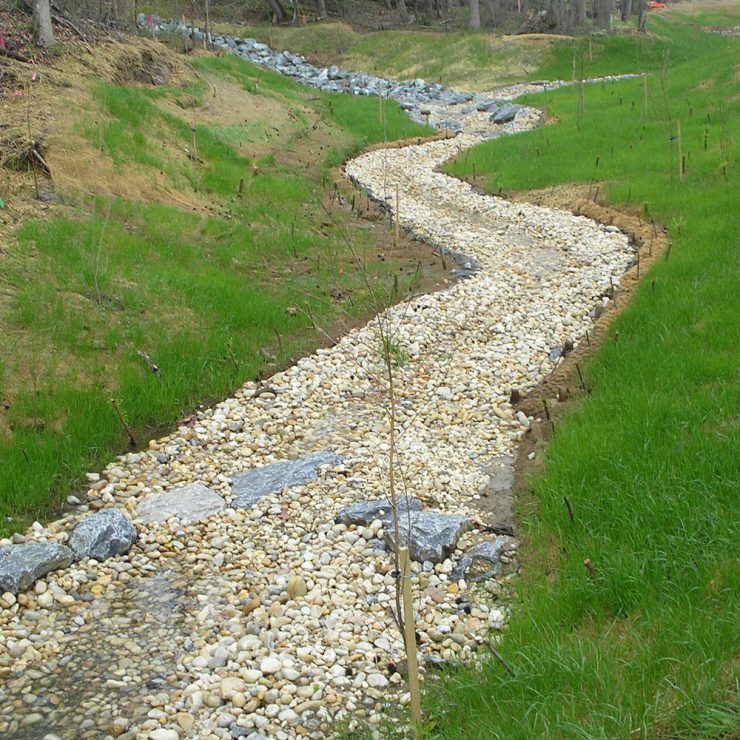Does stream restoration really work? It’s pretty controversial right now because the model that is being used by the Chesapeake Bay program for implementation of the Chesapeake Bay TMDL doesn’t credit stream restoration realistically as a strategy to control sediment or nutrients in the Watershed Implementation Plans. What is lacking is data demonstrating that stream restoration projects that are designed to reconnect and rehydrate floodplain wetlands and that have improvement in water quality and aquatic habitat as design objectives, really do reduce downstream sediment loads and really do sequester nutrients. The controversy in part relates to the fact that stream restoration practice is evolving…Not every restoration project has clear design objectives, monitoring protocols that measure whether the objectives are achieved, and years of monitoring data that provides the proof. We have the data for one of our projects and will soon be working through the Maryland Stream Restoration Association with other consultants and academia to assemble a submittal to the Bay Program to hopefully correct this oversight and appropriately credit stream restoration as one of the strategies local governments can use to achieve the Bay TMDL.
I would absolutely agree that there are projects out there that are called stream restoration that really aren’t. But I also see there are an increasing number of stream restorations that really do result in improved water quality and aquatic habitat. The keys in my mind are following a standard practice that includes conducting field based geomorphic and habitat assessment on the impacted stream and an appropriate reference stream, developing clear design objectives, following a proven design methodology that includes hydraulic and sediment modeling, developing a design that fulfills the objectives and developing appropriate monitoring protocols that will measure the outcomes of the design objectives. Additionally, having the designer in the field during construction of critical design features such as in stream structures, and having a consistent team conducting seasonally based monitoring after construction are also important keys to success.
So, I noted we have the data for one of our projects, and we did have clear design objectives and monitoring protocol and we now have five years of data collected following the protocol that demonstrate success. I recently reviewed all of the data again and the conclusions of the 5th year monitoring report. The report noted that during the five year monitoring period there was additional construction in the watershed draining the restoration reach, that fine sediment related to construction made its way into the project area and sediment accumulation was noted during the monitoring. While the sediment did not cause instability it did episodically affect water quality and aquatic habitat. More importantly, the data show improvement in abundance of macro invertebrates and a shift from pollution tolerant to somewhat pollution tolerant organisms. The report also notes, however, that future gains in diversity could be limited by existing sources of pollution and planned increases in impervious cover in the watershed.
